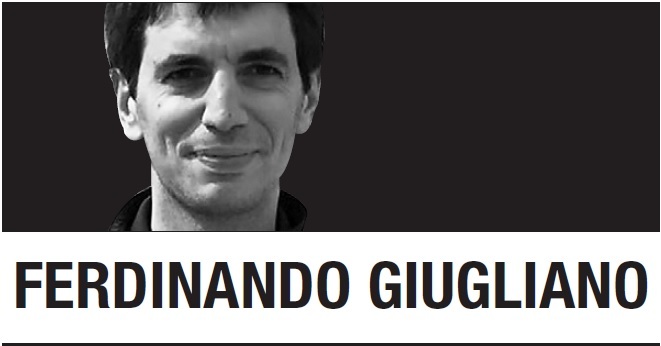
The Italian government has announced a stimulus package of 3.6 billion euros ($4 billion) to help the economy cope with the Coronavirus outbreak. The response appears timely and proportionate. Rome can always add to the stimulus later -- provided the financial markets allow it.
Roberto Gualtieri, minister of finance, said in an interview Sunday that he was looking at a three-step plan to support companies and workers. Italy is the European country most affected country by the COVID-19 epidemic, with over 2,000 total cases and 50 deaths. The government has had to confine tens of thousands of people to their local areas and closed down schools and public spaces in a number of regions, including Lombardy and Veneto, the country’s economic powerhouses.
The first set of measures -- including delays in tax and mortgage payments -- covers the 11 towns that have been in quarantine for a week. These actions cost little and show support for those bearing the biggest burden from the government’s moves. The second part is a broader stimulus package, whose details will be unveiled toward the end of this week. In the past, Rome has locked horns with the European Commission over its deficit targets, but the Italian government expects Brussels to green-light this plan.
Most interestingly, Gualtieri said he’s in touch with the finance ministers from the rest of the eurozone to discuss a possible joint fiscal response, which would involve additional resources. It’s little wonder that European stock markets perked up a little on Monday morning, though the detail of any euro-area fiscal plan would be crucial. A ready-made coordinated plan for just this kind of crisis might not have avoided last week’s market panic, but it wouldn’t have hurt.
Just like any other government, Rome faces huge uncertainties as it decides how to act. It’s not clear how long the epidemic will last or what kind of damage it will do. There is already a dampening effect on local and foreign demand, which raises the need for a fiscal stimulus. Yet there are also disruptions to supply chains, which will have the countervailing effect of putting upward pressure on prices, and would therefore warrant caution. It’s not clear yet how the European Central Bank will respond. Overall, Gualtieri is right to start slowly, since he can always increase the pace later.
The government also needs to be mindful of the financial markets. Italy’s public debt stands at a towering 135 percent of gross domestic product, which constrains how much Rome can do in a crisis. Last week, interest rates on Italy’s government bonds spiked, and the spread with Germany’s bund widened. It’s wise to test the water before taking a plunge. Even with the step-by-step approach, Italian stocks fell Monday.
An important question is how the government will choose to spend the money. It makes sense to start with the health care system, which is under strain because of the spike in infection cases. The number of intensive care units is a particular concern: The overall mortality rate of the virus in Italy so far appears to be at most 2 percent, but nearly 10 percent of those tested positive require intensive care. As the epidemic spreads, this could become hard to manage. The government will also need to spend money to help companies -- especially smaller ones -- retain workers and stay in business, as their activity suddenly comes to a halt.
These measures will not, on their own, rescue Italy from a terrible first quarter; The economy is expected to shrink. Nor are they the best possible response. As I’ve argued before, it would be far better if the eurozone had a joint budget, which countries could draw from in the event of a particularly severe crisis. However, provided the money is spent shrewdly, Italy’s package would offer some much-needed temporary relief, until the worst of the epidemic has abated.
If the outbreak of coronavirus in Europe and the world worsens much further, Europe will need to act together -- possibly through a combination of monetary and fiscal stimulus. For now, Italy’s doing what it can. It’s a step, but Europe could have managed this differently.
Ferdinando Giugliano
Ferdinando Giugliano writes columns on European economics for Bloomberg Opinion. -- Ed.
(Bloomberg)








![[Today’s K-pop] Blackpink’s Jennie, Lisa invited to Coachella as solo acts](http://res.heraldm.com/phpwas/restmb_idxmake.php?idx=644&simg=/content/image/2024/11/21/20241121050099_0.jpg)